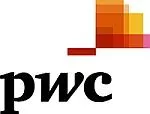Real GDP contracts 1.5% y/y in 2016
Despite headwinds, Nigeria's nominal GDP breached the NGN100trillion mark for the first time ever in 2016. This means in dollar terms, the economy retains its position as the largest economy in Africa, with GDP at USD337billion. In real terms however, the narrative is not as compelling. The economy recorded a contraction in growth by 1.5% y/y - the result of a mix of factors: foreign exchange and fuel shortages, intermittent power outages, delayed fiscal stimulus and lack of clarity on the policy environment. This performance was largely in line with our expectations. PwC had estimated real GDP growth at -1.7% y/y.
While the non-oil sector remained the major driver of the economy (91.6% of GDP), its resilience was called into question by a myriad of structural shocks. Real growth in the sector was -0.2% y/y for the first time in recent years, well below the 5-year average of 5.1%. As expected, the oil sector contracted sharply by 13.7%, a reflection of lower oil prices and massive shortages in oil production. Agriculture, Information and Communication, and Education emerged as the best performing sectors with respective y/y growth of 4.1%, 3.9% and 1.4%, while the Power, Mining and Real estate sectors were the worst hit, declining y/y by 15.0%, 13.6% and 6.9% respectively.
Since the rebasing of GDP series, the economic structure of Nigeria has shown increased diversification with oil becoming less relevant (8.4% of GDP), but only from an activity perspective. The oil sector remains the predominant source of fiscal and export revenues. This suggests an increasing linkage between the oil and non-oil sectors in particular, through the exchange rate channel.
2017: A return to positive growth
Our base case scenario puts 2017 growth at 0.7%, an improvement on 2016 levels, though below population growth of 2.8%p.a. and 5-year average growth of 4.8%y/y. This suggests there will be a gradual but weak recovery of economic activities and a further decline in per-capita GDP. This growth is expected to be driven by the following:
- Moderate improvement in crude oil production to an average of 1.8mbpd, up from 1.7mbpd in 2016, as attacks on oil and gas infrastructure moderate,
- Stabilisation of oil prices at an average of US$55/bbl supported by the implementation of OPEC's output freeze deal and,
- Improved liquidity in the foreign exchange market.

Improvements in oil revenues should support public spending and positively impact the current account balance. We project that the 2017 current account balance will post a surplus of 0.2% of GDP in 2017, from an estimate of -0.6% in 2016 even as terms of trade improve. This should increase foreign exchange liquidity to support a more flexible exchange rate regime thus narrowing further, the gap between the official and parallel market rates.
Hence, the real GDP growth projection of 0.7% takes account of the net effect of a number of recent developments, which suggest that consumption (65%-70% of GDP) will continue to grow at a below-average pace for a time and investments will likely remain subdued until at least mid 2017. The impact of these will be offset to some extent by the net positive effect of higher net exports and increased government expenditure. The key risk to our outlook stems from any significant shocks to the consumer, in particular variables that impact energy and transportation costs.
As usual, the path of the exchange rate remains a key source of uncertainty for the forecasts although our estimates point to the possibility of further devaluation of c.15% to NGN/USD350 by year-end 2017.
Real GDP contracts 1.5% y/y in 2016
Despite headwinds, Nigeria's nominal GDP breached the NGN100trillion mark for the first time ever in 2016. This means in dollar terms, the economy retains its position as the largest economy in Africa, with GDP at USD337billion. In real terms however, the narrative is not as compelling. The economy recorded a contraction in growth by 1.5% y/y - the result of a mix of factors: foreign exchange and fuel shortages, intermittent power outages, delayed fiscal stimulus and lack of clarity on the policy environment. This performance was largely in line with our expectations. PwC had estimated real GDP growth at -1.7% y/y.
While the non-oil sector remained the major driver of the economy (91.6% of GDP), its resilience was called into question by a myriad of structural shocks. Real growth in the sector was -0.2% y/y for the first time in recent years, well below the 5-year average of 5.1%. As expected, the oil sector contracted sharply by 13.7%, a reflection of lower oil prices and massive shortages in oil production. Agriculture, Information and Communication, and Education emerged as the best performing sectors with respective y/y growth of 4.1%, 3.9% and 1.4%, while the Power, Mining and Real estate sectors were the worst hit, declining y/y by 15.0%, 13.6% and 6.9% respectively.
Since the rebasing of GDP series, the economic structure of Nigeria has shown increased diversification with oil becoming less relevant (8.4% of GDP), but only from an activity perspective. The oil sector remains the predominant source of fiscal and export revenues. This suggests an increasing linkage between the oil and non-oil sectors in particular, through the exchange rate channel.
2017: A return to positive growth
Our base case scenario puts 2017 growth at 0.7%, an improvement on 2016 levels, though below population growth of 2.8%p.a. and 5-year average growth of 4.8%y/y. This suggests there will be a gradual but weak recovery of economic activities and a further decline in per-capita GDP. This growth is expected to be driven by the following:
- Moderate improvement in crude oil production to an average of 1.8mbpd, up from 1.7mbpd in 2016, as attacks on oil and gas infrastructure moderate,
- Stabilisation of oil prices at an average of US$55/bbl supported by the implementation of OPEC's output freeze deal and,
- Improved liquidity in the foreign exchange market.
2017: A return to positive growth
Improvements in oil revenues should support public spending and positively impact the current account balance. We project that the 2017 current account balance will post a surplus of 0.2% of GDP in 2017, from an estimate of -0.6% in 2016 even as terms of trade improve. This should increase foreign exchange liquidity to support a more flexible exchange rate regime thus narrowing further, the gap between the official and parallel market rates.
Hence, the real GDP growth projection of 0.7% takes account of the net effect of a number of recent developments, which suggest that consumption (65%-70% of GDP) will continue to grow at a below-average pace for a time and investments will likely remain subdued until at least mid 2017. The impact of these will be offset to some extent by the net positive effect of higher net exports and increased government expenditure. The key risk to our outlook stems from any significant shocks to the consumer, in particular variables that impact energy and transportation costs.
As usual, the path of the exchange rate remains a key source of uncertainty for the forecasts although our estimates point to the possibility of further devaluation of c.15% to NGN/USD350 by year-end 2017.
The content of this article is intended to provide a general guide to the subject matter. Specialist advice should be sought about your specific circumstances.

